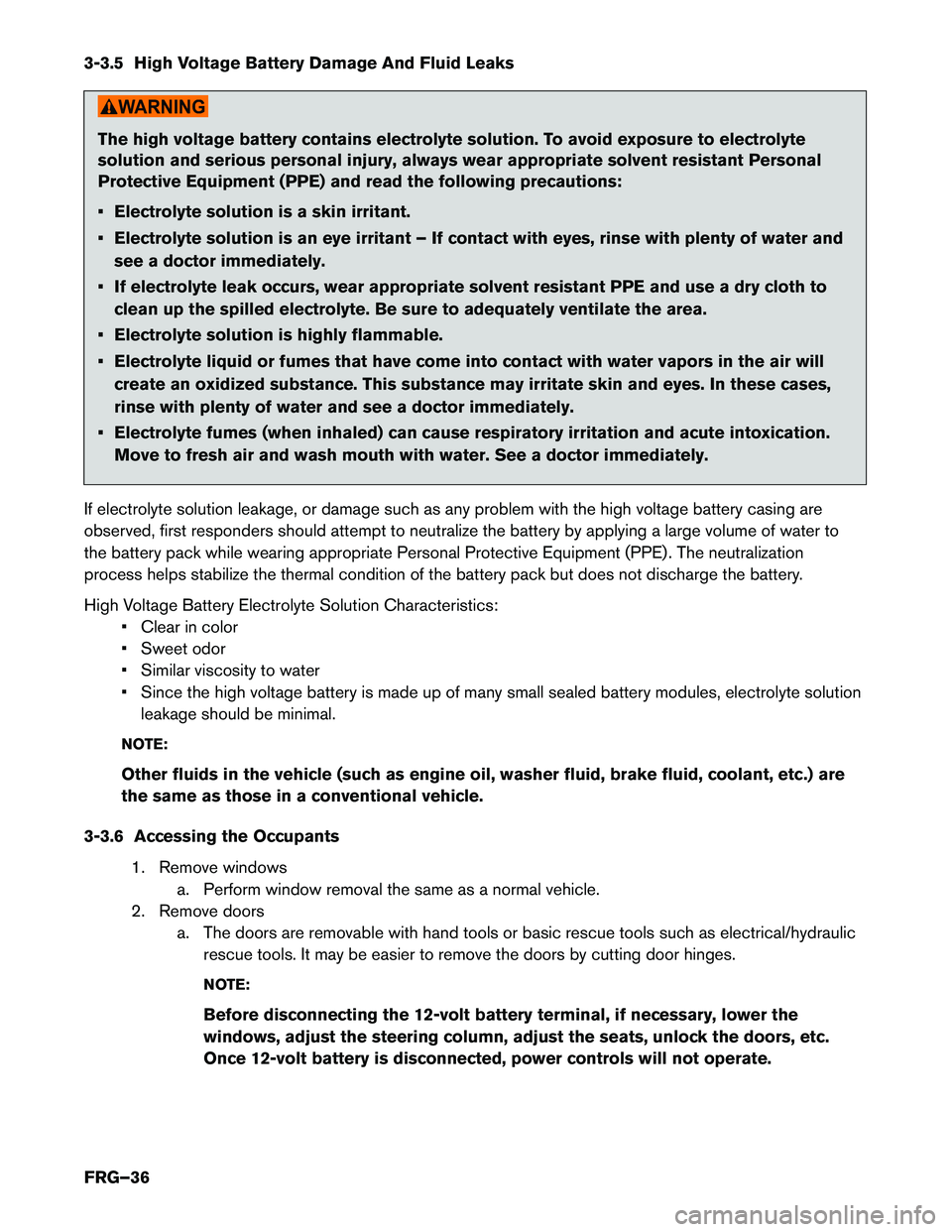washer fluid INFINITI Q50 HYBRID 2015 First responder´s Guide
[x] Cancel search | Manufacturer: INFINITI, Model Year: 2015, Model line: Q50 HYBRID, Model: INFINITI Q50 HYBRID 2015Pages: 43, PDF Size: 5.82 MB
Page 36 of 43

3-3.5 High Voltage Battery Damage And Fluid Leaks
The high voltage battery contains electrolyte solution. To avoid exposure to electrolyte
solution and serious personal injury, always wear appropriate solvent resistant Personal
Protective Equipment (PPE) and read the following precautions:
• Electrolyte solution is a skin irritant.
• Electrolyte solution is an eye irritant – If contact with eyes, rinse with plenty of water andsee a doctor immediately.
• If electrolyte leak occurs, wear appropriate solvent resistant PPE and use a dry cloth to clean up the spilled electrolyte. Be sure to adequately ventilate the area.
• Electrolyte solution is highly flammable.
• Electrolyte liquid or fumes that have come into contact with water vapors in the air will create an oxidized substance. This substance may irritate skin and eyes. In these cases,
rinse with plenty of water and see a doctor immediately.
• Electrolyte fumes (when inhaled) can cause respiratory irritation and acute intoxication. Move to fresh air and wash mouth with water. See a doctor immediately.
If electrolyte solution leakage, or damage such as any problem with the high voltage battery casing are
observed, first responders should attempt to neutralize the battery by applying a large volume of water to
the battery pack while wearing appropriate Personal Protective Equipment (PPE) . The neutralization
process helps stabilize the thermal condition of the battery pack but does not discharge the battery.
High Voltage Battery Electrolyte Solution Characteristics: • Clear in color
• Sweet odor
• Similar viscosity to water
• Since the high voltage battery is made up of many small sealed battery modules, electrolyte solutionleakage should be minimal.
NOTE:
Other fluids in the vehicle (such as engine oil, washer fluid, brake fluid, coolant, etc.) are
the same as those in a conventional vehicle.
3-3.6 Accessing the Occupants 1. Remove windowsa. Perform window removal the same as a normal vehicle.
2. Remove doors a. The doors are removable with hand tools or basic rescue tools such as electrical/hydraulicrescue tools. It may be easier to remove the doors by cutting door hinges.
NOTE:
Before disconnecting the 12-volt battery terminal, if necessary, lower the
windows, adjust the steering column, adjust the seats, unlock the doors, etc.
Once 12-volt battery is disconnected, power controls will not operate.
FRG–36